DNA, or deoxyribonucleic acid, is the molecule that carries genetic instructions essential for the development, functioning, and reproduction of all living organisms. Composed of nucleotides arranged in a double helix, DNA encodes the genetic information that dictates cellular activities and hereditary traits, playing a critical role in processes like replication, transcription, and translation.
Learning Objectives
In studying "DNA" for the MCAT, you should learn to understand the structure and function of DNA, including its role in storing genetic information and directing protein synthesis. Analyze DNA replication, repair mechanisms, and the enzymes involved in these processes. Evaluate the significance of nucleotides, base-pairing, and the double helix structure. Additionally, explore how mutations affect DNA and their implications in genetic diseases. Apply this knowledge to MCAT practice passages to interpret experiments and data related to DNA processes, mutations, and their biological consequences.
DNA Structure and Composition
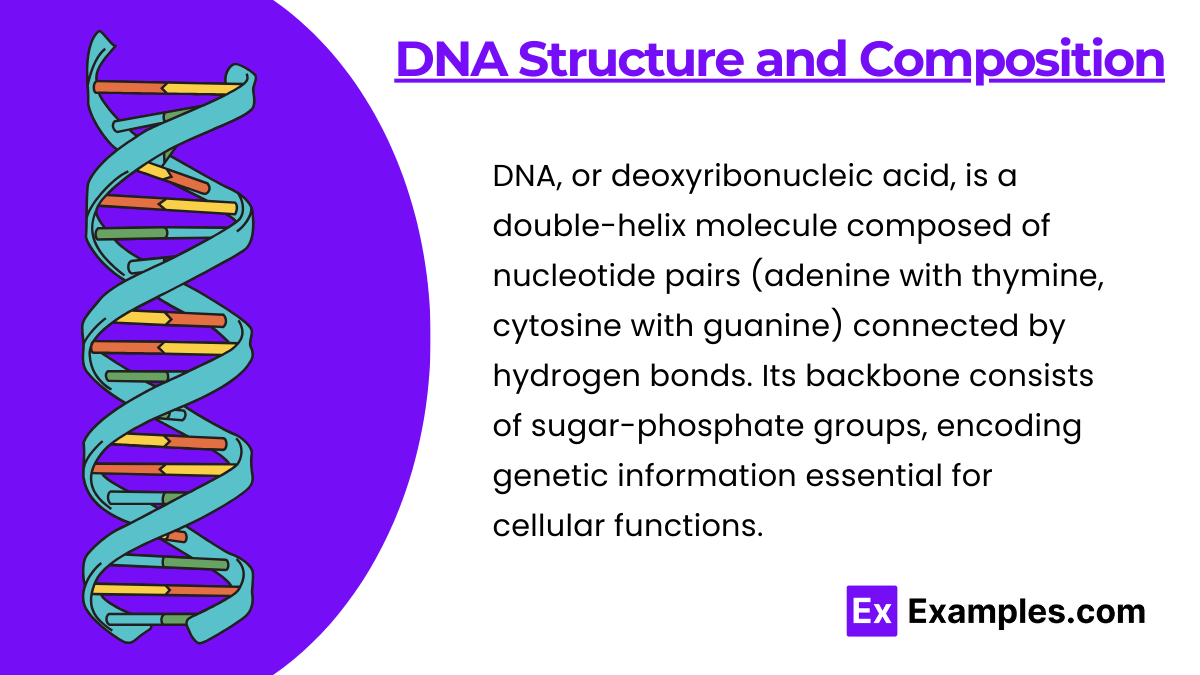
DNA (Deoxyribonucleic Acid): A molecule that carries genetic instructions used for growth, development, functioning, and reproduction of all living organisms.
Nucleotides: The building blocks of DNA, each consisting of three components:
Phosphate Group: Provides structural support to the DNA strand.
Deoxyribose Sugar: A five-carbon sugar molecule that forms part of the DNA backbone.
Nitrogenous Bases: Adenine (A), Thymine (T), Cytosine (C), and Guanine (G).
Base Pairing: A pairs with T (via 2 hydrogen bonds), and C pairs with G (via 3 hydrogen bonds).
Double Helix Structure: DNA is composed of two strands that wind around each other, forming a helical structure. The strands are antiparallel, meaning one strand runs 5' to 3' and the other runs 3' to 5'.
DNA Function and Genetic Code
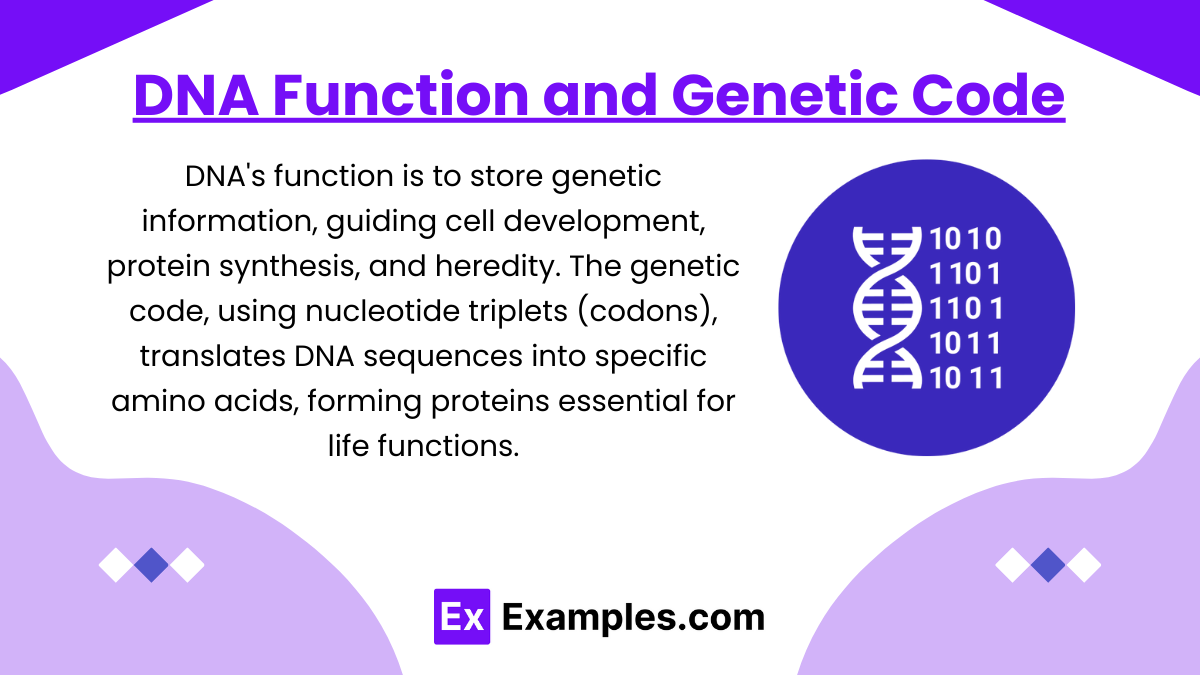
Genetic Code: DNA encodes information for protein synthesis using a sequence of bases. Triplets of bases, or codons, correspond to specific amino acids.
Genes: Segments of DNA that contain coding sequences (exons) for protein synthesis and non-coding sequences (introns).
Central Dogma of Molecular Biology: DNA → RNA → Protein. This flow of genetic information involves transcription and translation processes.
DNA Replication
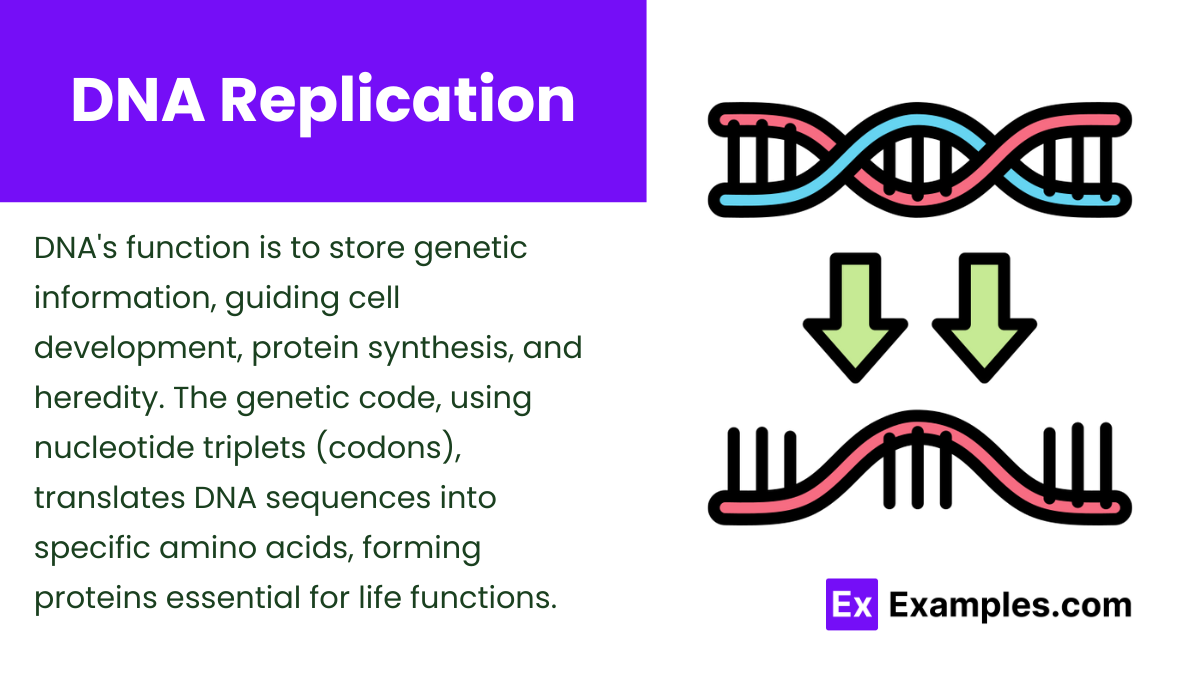
Semi-Conservative Process: Each new DNA molecule consists of one original strand and one new strand.
Key Enzymes:
Helicase: Unwinds the DNA double helix.
DNA Polymerase: Adds nucleotides to the growing DNA strand and performs proofreading.
Primase: Synthesizes RNA primers necessary for initiation.
Ligase: Joins Okazaki fragments on the lagging strand.
Leading and Lagging Strands: DNA is synthesized continuously on the leading strand and in short fragments on the lagging strand.
DNA Repair Mechanisms
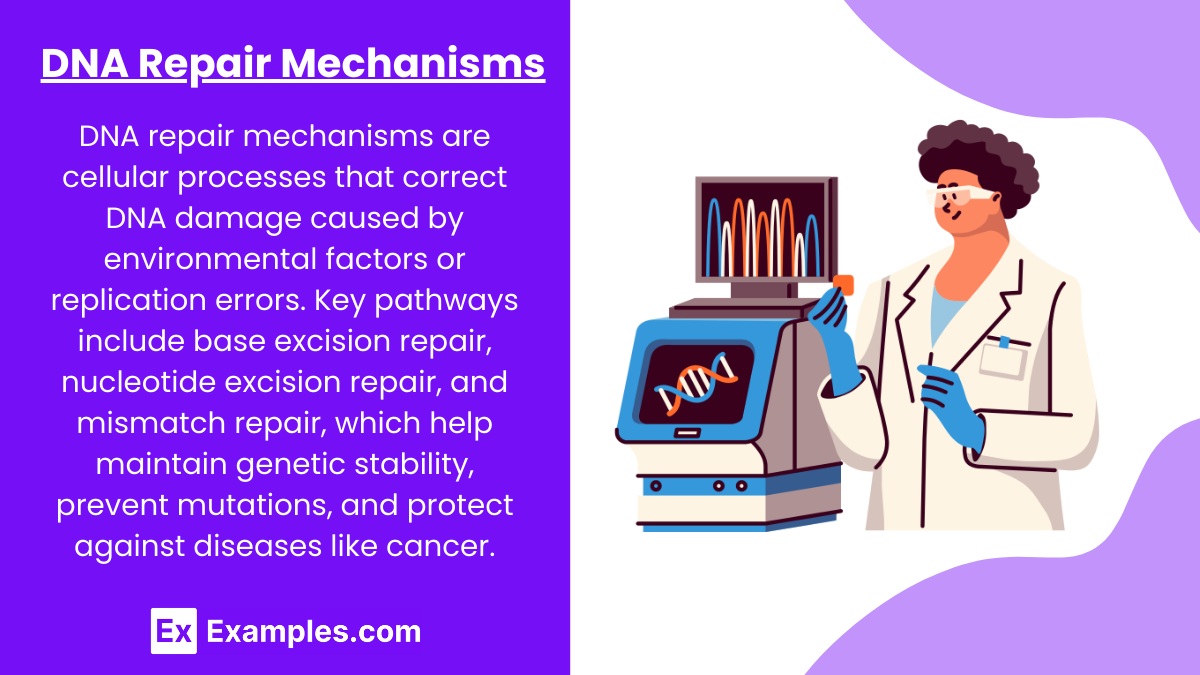
Mismatch Repair: Corrects errors that escape proofreading by DNA polymerase.This system corrects errors that DNA polymerase proofreading misses, typically base mismatches or small insertion/deletion loops. The MMR proteins detect distortions in the DNA helix, identify the newly synthesized strand, excise the erroneous segment, and replace it with the correct nucleotides, ensuring replication fidelity.
Nucleotide Excision Repair: Removes bulky DNA lesions (like thymine dimers).NER targets bulky lesions like thymine dimers, often caused by UV light. The process involves detecting the distortion, excising a short single-strand segment around the lesion, and filling in the gap with the correct sequence. NER plays a crucial role in maintaining genome stability by addressing damage that distorts the DNA helix.
Base Excision Repair: Fixes minor base modifications, often due to oxidation or deamination.BER corrects small, non-bulky base alterations due to oxidation, deamination, or alkylation. Enzymes recognize the altered base, excise it, and leave an abasic site. DNA polymerase then adds the correct nucleotide, and DNA ligase seals the strand, preserving the integrity of the genetic code.
DNA Mutations
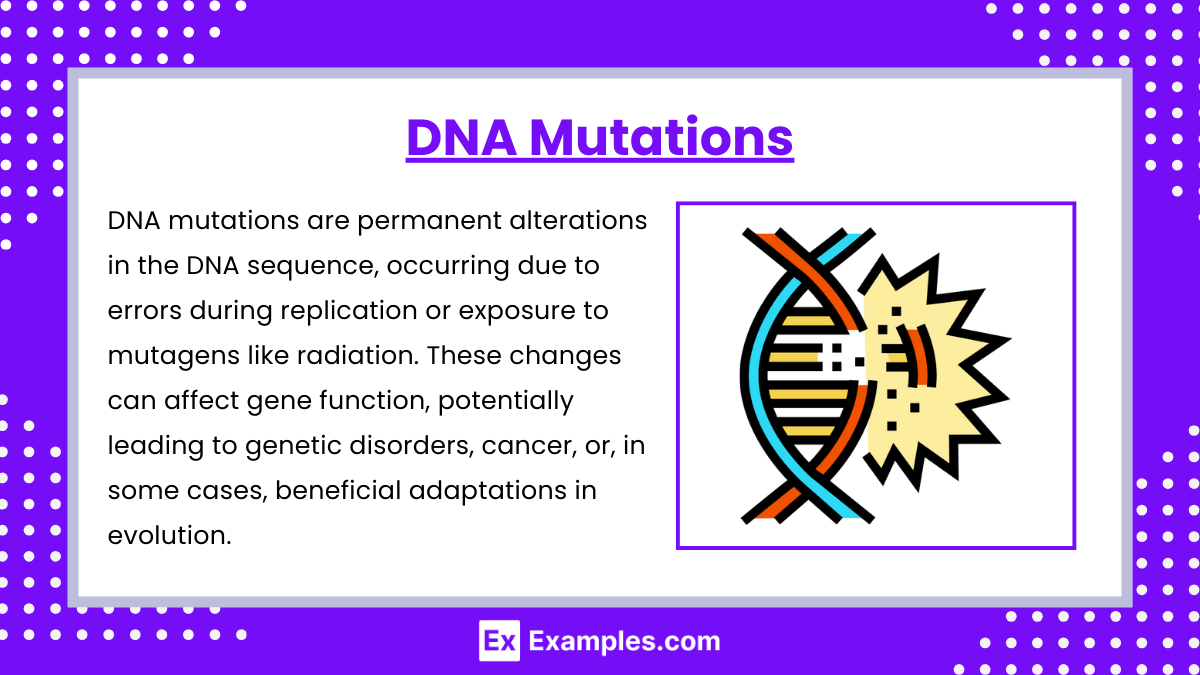
DNA mutations are permanent changes in the DNA sequence, arising from replication errors or environmental factors like chemicals and radiation. They can alter gene function, potentially causing genetic disorders, cancer, or, occasionally, beneficial traits that drive evolution.
Chromosomal Mutations:
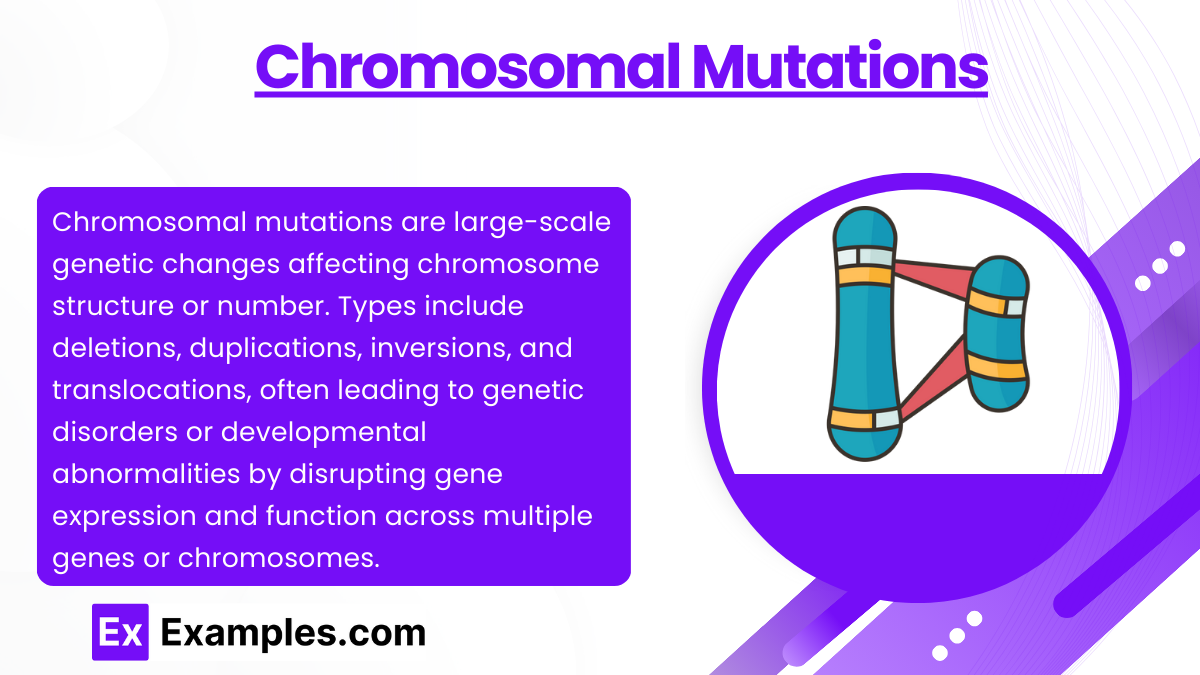
These involve large-scale changes to chromosome structure, affecting multiple genes and having broader impacts:
Deletions: Loss of a chromosome segment, which can result in the removal of essential genes and lead to severe genetic disorders.
Duplications: Repeating a chromosome segment, potentially causing gene dosage imbalances that disrupt normal cell function.
Inversions: Reversal of a chromosome segment, which can disrupt gene function if breakpoints occur within a gene or regulatory region.
Translocations: Transfer of a chromosome segment to a non-homologous chromosome, potentially creating novel gene fusions that contribute to cancers and other diseases.
DNA Technology
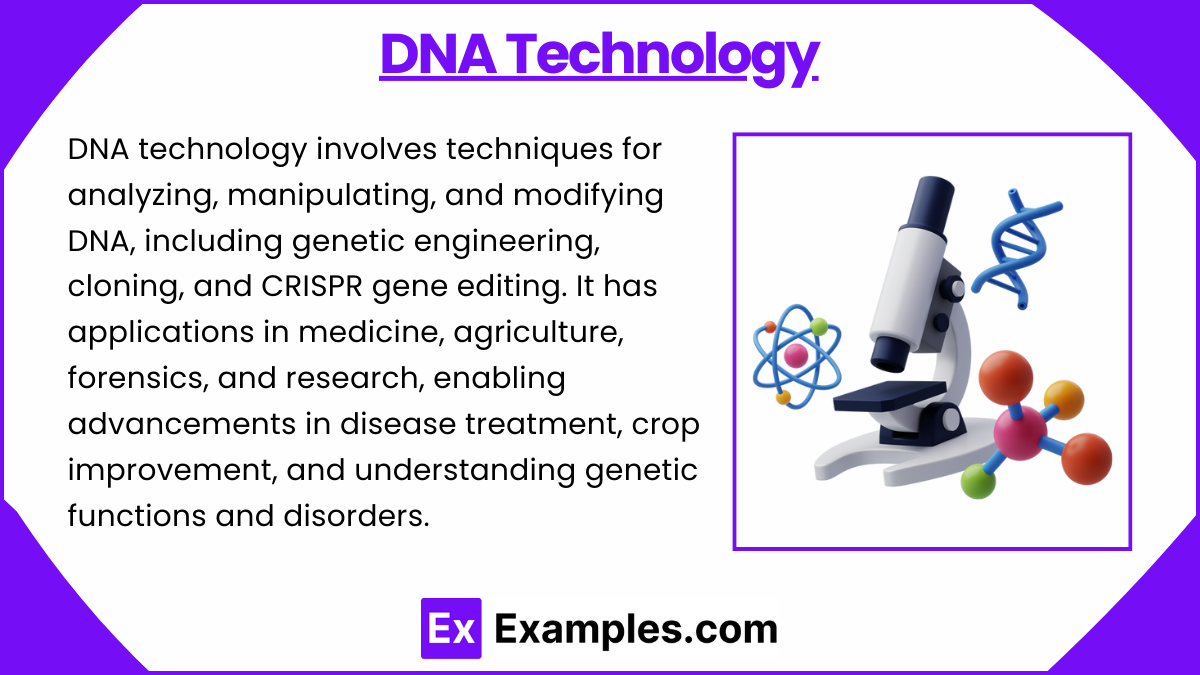
Polymerase Chain Reaction (PCR): Amplifies specific DNA sequences for analysis. PCR is a technique used to amplify specific DNA sequences exponentially. By utilizing heat-stable DNA polymerase, primers, and cycles of heating and cooling, PCR can create millions of copies of a target DNA segment within hours. This method is essential for various applications, including cloning, genetic testing, and forensic analysis.
Gel Electrophoresis: This technique separates DNA fragments by size using an electric field applied across a gel matrix. DNA fragments move through the gel, with smaller fragments migrating faster and farther than larger ones. Gel electrophoresis is commonly used to visualize PCR products, analyze restriction digests, and assess DNA purity or size.
DNA Sequencing: DNA sequencing determines the exact order of nucleotides in a DNA molecule. Modern methods, like Next-Generation Sequencing (NGS), enable rapid and high-throughput sequencing, providing essential insights into genetic information, identifying mutations, and studying evolutionary relationships. Sequencing is vital for research, diagnostics, and personalized medicine.
CRISPR-Cas9: A gene-editing tool that allows targeted modifications in the genome.CRISPR-Cas9 is a powerful gene-editing tool that allows precise modifications to the genome. Using a guide RNA to target specific DNA sequences, Cas9 acts as molecular scissors, making cuts at targeted sites. Researchers can then delete, insert, or alter genetic material, offering potential for treating genetic disorders, advancing biotechnology, and studying gene functions.
Examples
Example 1: DNA Fingerprinting
This technique analyzes unique DNA patterns to identify individuals, often used in forensic science for criminal investigations and paternity tests.
Example 2: Gene Therapy
A medical approach that involves modifying faulty DNA in patients to treat or prevent genetic disorders, such as cystic fibrosis or sickle cell anemia.
Example 3: Recombinant DNA Technology
This involves combining DNA from different organisms to create new genetic combinations, commonly used in biotechnology to produce insulin or other medications.
Example 4: DNA Sequencing
Determines the exact sequence of nucleotides in a DNA molecule, providing insights into genetic information, evolution, and disease susceptibility.
Example 5: PCR (Polymerase Chain Reaction)
A laboratory technique that amplifies specific DNA segments, enabling detailed genetic analysis for research, diagnostics, and forensic investigations.
Practice Questions
Question 1:
What type of bond holds the nitrogenous bases of DNA together?
A) Ionic bond
B) Covalent bond
C) Hydrogen bond
D) Peptide bond
Answer: C) Hydrogen bond
Explanation: Hydrogen bonds hold the nitrogenous bases together in DNA, specifically between A-T (2 bonds) and C-G (3 bonds), providing stability to the double helix structure while allowing separation for replication.*
Question 2:
Which enzyme is primarily responsible for adding nucleotides during DNA replication?
A) Helicase
B) DNA Ligase
C) DNA Polymerase
D) Primase
Answer: C) DNA Polymerase
Explanation: DNA Polymerase is responsible for adding nucleotides to the new DNA strand during replication. It also proofreads the newly synthesized strand to ensure accuracy and fidelity in DNA replication.*
Question 3:
What is the role of mRNA in the central dogma of molecular biology?
A) To replicate DNA
B) To carry amino acids
C) To transfer genetic information from DNA to ribosomes
D) To break down proteins
Answer: C) To transfer genetic information from DNA to ribosomes
Explanation: mRNA acts as a messenger, carrying the genetic code from DNA in the nucleus to ribosomes in the cytoplasm, where it directs the synthesis of proteins during translation.


